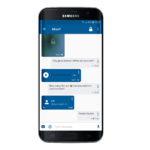Examples Of CTAs That Work
If you are writing web content for marketing purposes or if you have hired a freelancer to do it for you, know that you must insert a CTA in the text. What is it about? We try to explain it – for the layman – in this blog post, also offering examples of CTAs that work for different types of content to be published on the web.

What is the CTA?
CTA is an acronym well known by those who write for marketing which means Call-to-action , or call to action. It is designed and written in order to solicit a response (immediate and often moved by an emotional impulse) from the person who reads the message. The Call-to-action is usually a concise sentence with an invitation to perform a single well-defined action (download a free e-book , fill out a form with your data, press the purchase button, etc.) and – all inside the page or web content is graphically well recognizable . Surely you will have met many too, on many of the websites that you frequent regularly.
Examples of CTAs that work
Now that you know the meaning of the CTA acronym, you will have noticed that if you write or have people write on your site / blog for marketing like Wikipedia page creation agency purposes (so-called content marketing ), you will need to have a Call-to-action . Here are some examples that work well and can inspire you to make your calls to action come true.
Before starting it is good that you know that there are 2 types of CTAs:
- Anchor text , with hyperlinks within your content
- Interactive buttons
The Call-to-action can create internal links (for example to your landing page designed specifically for the purchase) or external links, generating a so-called outbound links. However, in this article, we will focus only on the text of the Call-to-Action, so that it is made as effective as possible.
The effective and working CTA has only two purposes:
- Tell the user what to do
- Give him the motivation to do it
If you manage to hit both goals, you win.
For a functional Call-to-action to your marketing objective, you need to create a text (and possibly get the help of the right graphic format) that makes you understand:
- The need for the person
- The product / service that fulfills this need
- The action you want to do
- The tone of voice of the company .
Here are some examples that can help you.
1) Put the advantage ahead of everything else
You can write or have your freelance copy write a call to action that puts the benefit above everything else. Examples of this type of CTA are:
Watch what you want, anywhere. Cancel when you want (pay-per-view Netflix)
Maximum organization, minimum effort (Evernote software)
2) Generate interaction with your audience
#doitsmart, create your promo code (Satispay)
3) Countdown, “scarcity” effect
Limited Time Offer: Create your blog today and get $ 297 in blogging bonuses (Blogging.org platform) .
You can indulge yourself with creativity, as long as you respect the “stakes”: be concise, generate curiosity, stand out from the rest.
Ultimately, the CTA is used to make the user take an action. And this action is one of the 6 below:
Subscribe
It can be an online course or a free trial. A future event or to receive a promotional good / service.
Subscribe
Use this call to action so as not to commit a person to the actual purchase. Use it if you want to build audiences by connecting users to your business by providing them with updates.
Try for free
Use this call to action to allow people to try your product / service before they buy it. Almost every business site today has a free trial offer.
It begins
A virtual tour, a free trial, any (guided) user experience on your product or service.
to know more
Sometimes, all you want to do is give your potential customers a little more information so they’re ready to buy something. That’s what this CTA is for.
Join us
If your business is managing an online community or if your CTAs are designed for social media, use this call that invites the user to take the action of being part of a (naturally exclusive) group.
Three mistakes you shouldn’t make when developing your CTA
Do you remember the aims of the CTA? Well, always keep them in mind and the following mistakes will seem so obvious and elementary to you that, for sure, you won’t make them.
- Don’t put too many CTAs on the same web content . A single call to action with a motivation to do so is an optimal measure. You have to avoid all sorts of ambiguities and distractions
- Don’t be verbose or too short when composing your textual Call-to- Action. If you use a button instead, better customize it in color and text and not write a simple “click here”. It is much more effective if you write “Download now!”, For example, by placing the button in a strategic point and distinguishing it graphically and chromatically from the rest of the page. Here a good marketing expert can give you valuable advice
- Do not deceive and do not hide. The golden rule of a Call-to-action destined for success is: do not promise illusions. Don’t write false promises, but promise what your product / service can deliver. If you start off on the wrong foot, the relationship of trust with your user-customer will never start. If you have any, also include testimonials and / or social proofs, as long as they are true. Do not hide, however, means: make your call to action clearly visible and recognizable within your web content and your social posts . If you camouflage your text or button CTA, no one will notice and click on it.
















